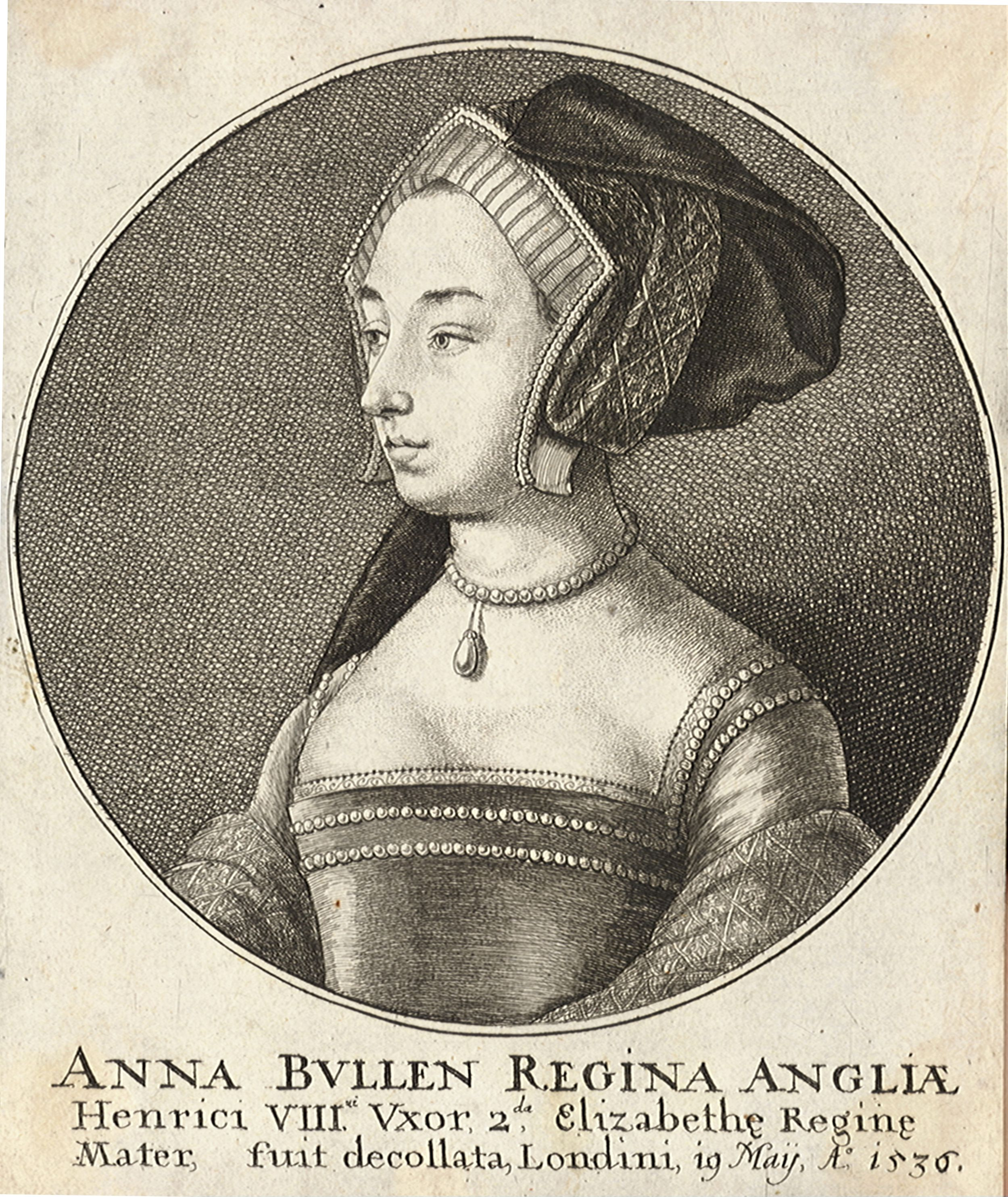by Heather R. Darsie
In the Tudor time period, life was very much governed by the church, and people in England generally, at least outwardly, were a religious and God-fearing. Witchcraft was thought to exist, and God could express his pleasure or displeasure, or otherwise send signs through any number of mediums. Did God try to warn Henry VIII, or even Anne Boleyn, that their courtship was ultimately doomed?

Wenceslaus Hollar [Public domain], via Wikimedia Commons
By 1527, it was no secret that Henry VIII harbored an affection for Anne Boleyn. In May of that year, Henry was explaining to Cardinal Wolsey why Henry felt he was living in sin by having married his deceased brother’s wife. Cardinal Wolsey had been made legatus a legere, putting him in the position of the most powerful religious figure in England. Henry relied on a passage from the Christian bible, namely Leviticus 20:21, which states, “And if a man shall take his brother’s wife, it is an unclean thing: he hath uncovered his brother’s nakedness; they shall be childless.” Henry, of course, had his daughter Mary with Catherine, but no male heir and several still births or infants who only lived for a few weeks. But this was not enough to ensure the Tudor dynasty.
Henry’s infatuation with Anne became quietly public in 1526. During the Shrovetide Joust in 1526, Henry wore an emblem of an enflamed man’s heart in a press, with the words, “Declare je nos,” or “Declare I dare not.” This was an open display that Henry had a new love, and it is widely presumed that the new love was Anne. As mentioned above, Henry’s desire for Anne picked up considerable momentum by the spring of 1527. By June, Henry chose to tell his wife Catherine that he was pursuing an annulment of their marriage. The impending food shortages around the country were not yet apparent, even if Henry’s alarming behavior was.
The summer continues with Henry and Anne wooing each other, such that they pledge to marry one another. In August of 1527, Henry applies to the Pope for a dispensation, allowing him to marry a woman with whom he knew through the first degree of affinity. This was thought to be Anne because it is widely suspected that Henry had carried on a relationship with Anne’s sister Mary for some time before Mary fell pregnant with her second child.
In the meantime, Mother Nature began wreaking havoc on England by dumping rain most days beginning in April of 1527, when Henry first began seriously looking into annulling his marriage. It finally ended in early June 1527. These weather irregularities set the stage for a blight upon England come harvest time in 1527, with some areas having less than thirty percent of the harvest yield needed to bring the parish, town, etc., successfully through the winter. The overly wet weather pattern continued on into 1528.
Bearing in mind that this article is more for discussion, let us bring the parallels together and pull in a couple other intriguing cultural shifts happening by or in 1527. The religious reform had started some years before with that upstart Martin Luther over in Germany. By 1527, Lutheranism and the Reformist movement, generally, were in full swing. Anne Boleyn was a Reformist, which of course went against the Pope in Rome. Henry’s actions in 1527, encouraged by his passion for his new love, were pushing the boundaries of his public devotion to Pope Clement VII. With Henry and Anne’s relationship becoming so public in 1527 and the weather turning sour right around the same time, it is certainly interesting to ponder just how the people of England interpreted the actions of their king, and whether God was expressing his extreme displeasure at the thought of Anne becoming Queen of England. The sweating sickness returned, along with more rain, in 1528.
What are your thoughts? Might these events, when looked at in the context of the Tudor period, looked quite ominous?
Sources & Suggested Reading
- Booty Meteorological. Untitled. Weather event log for 1500-1599. http://booty.org.uk/booty.weather/climate/1500_1599.htm Retrieved 18 December 2016.
- Parkin, John; M. D. Epidemiology; or, the Remote Cause of Epidemic Diseases in the Animal and in the Vegetable Creation. Part II. London: David Bogue (1880).
- Warnicke, Retha. The Rise and Fall of Anne Boleyn. Cambridge: Cambridge University Press (1989).
- Ives, Eric. The Life and Death of Anne Boleyn. Wiley-Blackwell (2005).
- Dymon, David. “The Famine of 1527 in Essex.” University of Cambridge. http://www.localpopulationstudies.org.uk/PDF/LPS26/LPS26_1981_29-40.pdf Retrieved 5 January 2017.

5 thoughts on “Anne Boleyn and the Famine”